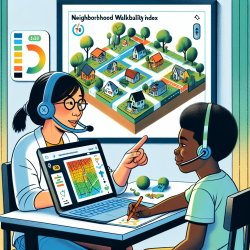Understanding the Impact of Household Environment on Children's Respiratory Health
The study titled "Household environmental factors and children’s respiratory health: comparison of two cross-sectional studies over 25 years in Wuhan, China" provides valuable insights into how changes in household environments can significantly impact children's respiratory health. As practitioners focused on creating positive outcomes for children, it is crucial to understand these findings and consider their implications in our work.
Key Findings from the Research
The research conducted in Wuhan, China, compared two periods: 1993-1996 and 2017-2018. It focused on three primary indoor air quality determinants: environmental tobacco smoke (ETS), household coal use, and kitchen smoke. Over the 25-year period, the prevalence of these factors decreased significantly:
- ETS exposure reduced from 86.6% to 45.9%.
- Household coal use dropped from 47.6% to 4.9%.
- Kitchen smoke exposure decreased from 58.9% to 7.3%.
These reductions were associated with a notable decrease in respiratory symptoms among children, such as cough with colds and phlegm with colds. However, the prevalence of asthma and bronchitis showed less significant changes, indicating the complexity of these conditions.
Implications for Practitioners
For practitioners, these findings underscore the importance of considering environmental factors in the assessment and treatment of respiratory issues in children. Here are some actionable steps practitioners can take:
- Educate Families: Inform families about the impact of indoor air quality on respiratory health and encourage practices that reduce exposure to harmful pollutants.
- Advocate for Smoke-Free Environments: Support policies and initiatives that promote smoke-free homes and public spaces to protect children from ETS.
- Promote Ventilation: Encourage the use of proper ventilation systems in homes to reduce kitchen smoke and improve overall air quality.
- Stay Informed: Keep up with the latest research on environmental health and its impact on respiratory conditions to provide evidence-based care.
Encouraging Further Research
While this study provides valuable insights, it also highlights the need for further research to explore the long-term effects of improved indoor air quality on chronic respiratory conditions like asthma and bronchitis. Practitioners are encouraged to engage in or support research efforts that aim to deepen our understanding of these complex issues.
To read the original research paper, please follow this link: Household environmental factors and children’s respiratory health: comparison of two cross-sectional studies over 25 years in Wuhan, China.










